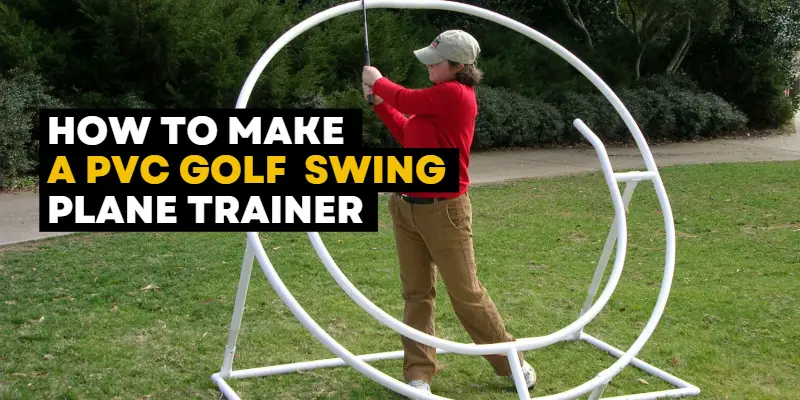How to Swing a Golf Club: A Comprehensive Guide
Starting your golf journey hinges on a key skill: mastering “How to Swing a Golf Club.” This skill forms the backbone of every swing, every hole, and every moment on the course. Whether you’re a beginner taking those initial steps or a seasoned player aiming for improvement, grasping the essentials of this vital move is the pathway to unlocking your full potential.
Improving your swing means diving into its details. From getting the right grip and stance to executing a smooth, well-timed motion, each part contributes to crafting that perfect swing. Join us as we break down the art of swinging a golf club, offering useful tips and guidance to navigate this crucial aspect of the game.
So, buckle up and get ready to explore the world of golf swings. This guide is your roadmap to mastering the mechanics, honing your technique, and ultimately elevating your game on the green.
How to Swing a Golf Club?
The short answer to the question of how to swing a golf club is: practice, practice, practice. There are no shortcuts or quick fixes when it comes to mastering this crucial aspect of the game. It takes time, dedication, and a lot of trial and error.
Easy Process to Swing A Golf Club
- Grip the club correctly. Place your hands on the handle so that your left hand (for right-handed players) is positioned just above your right hand. This will help you maintain control throughout your swing.
- Next, address the ball with proper posture and alignment. Stand with your feet shoulder-width apart and position yourself so that the ball is in line with the inside of your left heel (again, for right-handed players). This will ensure that you make solid contact with each shot.
- Now comes the actual swing. Begin by turning your shoulders away from the target as you start backswing. Maintain a smooth tempo and avoid any jerky movements.
- As you transition into downswing, shift your weight onto your front foot while maintaining a firm but relaxed grip on the club.
- Follow through after making contact with the ball by rotating hips towards target and extending arms fully.
Remember, repetition is key here – keep practicing these steps until they become second nature.
What’s the correct way to swing a golf club?
What’s the correct way to swing a golf club? It’s a question that every golfer, from beginners to seasoned pros, asks themselves. The truth is, there isn’t just one right way to swing a golf club. Each golfer has their own unique style and technique that works best for them.
However, there are some fundamental principles that can help improve your swing and increase your chances of hitting the ball straight and far. First and foremost, it’s important to have good posture and grip. Stand with your feet shoulder-width apart, knees slightly bent, and keep your back straight.
When gripping the club, make sure you’re holding it firmly but not too tight. Your wrists should be relaxed so they can hinge properly during the swing. As you begin your backswing, turn your shoulders away from the target while keeping your head still.
During the downswing, focus on shifting your weight onto your front foot as you rotate through impact. This will help generate power in your swing. At contact with the ball, make sure to square up the clubface by rotating your forearms.
How to do a golf swing for beginners?
Learning how to do a golf swing as a beginner can seem like an intimidating task, but with the right approach and practice, you’ll be teeing off like a pro in no time.
First things first, it’s important to understand the basic mechanics of a golf swing. Start by gripping the club properly – your hands should be relaxed and positioned just below the club’s grip. As for stance, stand with your feet shoulder-width apart and align yourself parallel to the target line.
Now let’s talk about body rotation. As you begin your backswing, turn your shoulders away from the target while keeping your lower body relatively stable. This will help generate power for your swing. Then comes the downswing – this is where you unleash that power by rotating your hips towards the target and releasing your hands through impact.
Timing is key when it comes to executing a smooth golf swing. It may take some trial and error at first, but focus on finding that sweet spot between rushing through each step or being too slow and deliberate.
Remember, practice makes perfect! Head out to the driving range or enlist in beginner-friendly lessons to refine your technique. And most importantly, have fun with it! Golf is all about enjoying yourself while challenging both mind and body.
So grab those clubs and start swinging away – trust us when we say that once you master this foundational skill as a beginner golfer, there will be no stopping you on the course.
How do you swing irons properly?
Iron play is a crucial aspect of the game of golf, as it often determines accuracy and distance control. To swing irons properly, there are a few key factors to keep in mind.
It’s important to have the correct grip on the club. Position your hands so that they feel comfortable and secure, with your left hand (for right-handed players) slightly rotated to the right. This promotes a square clubface at impact.
Next, focus on your posture. Stand with your feet shoulder-width apart and bend forward from the hips while keeping your back straight. Your weight should be evenly distributed between both feet for stability.
As you initiate the swing, remember to maintain a smooth tempo and rhythm throughout. Avoid any jerky or abrupt movements that may affect your balance or timing.
When striking the ball with an iron, aim for a downward strike rather than sweeping it off the ground like you would with a driver. The goal is crisp contact with a slight divot after impact.
Follow through completely after hitting the ball. Allow your body to rotate naturally towards the target while maintaining good balance until completion.
Experimenting with different techniques and seeking guidance from professionals can also greatly improve your consistency and effectiveness on course.
How do I get an effortless golf swing?
This is a question that many avid golfers ask themselves. The key to achieving an effortless swing lies in mastering the fundamentals and practicing regularly.
It’s important to have a solid grip on the club. Make sure your hands are placed correctly, with the left hand (for right-handed players) slightly rotated counterclockwise and the right hand resting comfortably on top. This will give you more control over the club throughout your swing.
Next, focus on maintaining a smooth tempo and rhythm. It’s easy to rush or try to hit the ball too hard, but this often leads to poor results. Instead, take your time and let your body naturally flow through each movement of the swing.
Another crucial aspect of an effortless golf swing is proper weight transfer. As you start your backswing, shift your weight onto your back foot before smoothly transitioning it onto your front foot during the downswing. This transfer of weight helps generate power without sacrificing control.
Additionally, pay attention to your posture and alignment. Stand tall with slight knee flexion and keep a relaxed upper body throughout the swing. Align yourself parallel to where you want the ball to go for better accuracy.
Don’t forget about practicing! Consistent practice allows muscle memory to develop and improves overall technique over time.
Developing an effortless golf swing requires focusing on proper grip, maintaining rhythm and tempo, transferring weight effectively, ensuring good posture and alignment while consistently practicing these techniques. With dedication and patience, anyone can achieve a smoother and more powerful golf swing.
Conclusion
Mastering the art of the golf swing is vital for golfers of all levels, whether novice or seasoned. Understanding and honing correct techniques can significantly boost performance on the course.
This article delves into the fundamental aspects of effective golf swings. From grasping the proper grip and stance to executing a fluid motion, numerous factors contribute to a solid technique.
For beginners, mastering the basics is key. Take time to comprehend each element of the swing and practice regularly. With experience, consider seeking guidance from instructors for personalized feedback.
Achieving a proper iron swing involves maintaining body balance, a steady head, and focus on the ball. Correct weight transfer during both backswing and downswing ensures power and accuracy.
An effortless swing demands relaxation, rhythm, and well-sequenced motions. Embrace muscle memory for consistency instead of overthinking.
Every golfer’s journey to mastery is unique. Patience, dedication, and practice on the range or green are crucial. Embrace challenges as opportunities for growth.
Focus on perfecting fundamental techniques before advancing. Seek professional advice, trust yourself, and steadily build a strong foundation in golf swing mechanics.







3 Comments